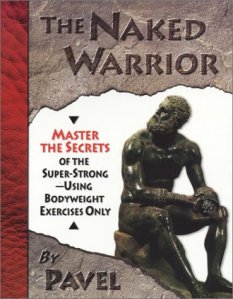
“How can I master the squat? Or the bench? Listen, all I want to do is put more weight on the bar and get stronger in the process.”
I hear you, and there are plenty of ways we can do the above – it just depends on each person’s biomechanics, training level, and previous injury level if any. We could row and shrug to get a bigger upper back (wouldn’t hurt for any of the above), do pause reps when we can, and do some speed reps, among a host of other ways of adding numbers to the bar.
However, it should be emphasized that these approaches to increasing pounds on the bar are secondary to the internal techniques that should reign supreme when talking about gaining “strength” and mastering a movement.
Enjoy mastery of any movement with these simple techniques.
-
Minimize your exercise selection, along with managing fatigue.
-
Maximize local and global tension used when performing any movement.
-
Increase your frequency to “grease the groove.”
Now, if we were to talk about mastery of a movement, then how would your opinion change of achieving strength? Imagine that one of the craziest gymnasts turned Cirque du Soleil choreographer has just turned up at your door step, and challenges you to a series of bodyweight movement exercises with the time frame set for the next year same time. The manner in which you’ll be judged is based on how clean and efficient your technique is for any bodyweight movement. How would you approach certain exercises after this challenge?

When I read through Convict Conditioning, The Naked Warrior, and other calisthenic and bodyweight oriented books, I began to realize that the main principles that these fellas are talking about are the same ones I hold myself accountable to when mastering a movement.


I’ve been utilizing these techniques for years already – there would be no way to perform flares, handstands, and other awesome moves without such techniques. However, breaking down what is intrinsically learned is vital to learning and applying these techniques to your own training sessions:
Getting your work in.
This technique I cannot teach nor force upon anyone. It is simply coming in and doing the work laid out for you. Dan John talks about punching in the clock for your training sessions, and Pavel calls it “greasing the groove”. Just get the work done and get it done correctly, and your body will adapt accordingly. I prefer to call this discipline. The ideal time frame for “getting your work in” should be literally 5-10 minutes at least 2 to 3x per day. In the grand scheme of things, 5 minutes x 3 = 15 minutes, x 7 days = 105 minutes = 1.75 hours of work outside of your planned work out sessions for the day. What is so ridiculous about busting out 20 push-ups in the middle of your work day, 3x per day? Break up the monotony of the day, whether it is in the college lounge, library, or work cubicle. Stay fresh throughout the day, and your strength will come over time.
Maximal Tension
When performing any type of bodyweight movement, exerting maximal tension at the correct time throughout the entire body is a method employed to get the most out of the exercise or movement.

For example, when you’re performing a squat, all you have to do is sit down and up, correct? Yes, and no. Next time you do a squat, do these things: brace your stomach (imagine if Bruce Lee was going to punch you in the stomach – what would you do?), push your knees out, and “pull” the floor towards you as you descend, and reverse it on the way up.
[youtube=https://www.youtube.com/watch?v=o9a-Gtmo5SI]
Progression
Performing basic movements but altering the center of gravity, base, or leverage will increase its difficulty, which will hopefully lead to better gains over time. In regards to weight lifting, it is easy for someone to add weight on and on judiciously, and possibly see injuries or adjust their form to compensate for “more weight lifted”.
When talking about bodyweight training, it can take significantly more time to progress from one exercise to its progression, i.e. Wall Supported Handstand Push-Ups to Unsupported Handstand Push-Ups.
[youtube=https://www.youtube.com/watch?v=FYEQGhhKVgc]
Start basic and then increase from there.
Movement Quality
We want to make sure our movement looks pristine before claiming “mastery” of the movement and progressing from there. As late speed coach Charlie Francis says, “Looks right, flies right.” So don’t progress to supported handstand push-ups if you can’t even do a push-up that doesn’t look fantastic. I emphasize to my clients, if “The Push-Up Master” walked in, what would he say about your push-up form? Yes, we can’t be perfect, but there is no reason we can’t pursue it in our movements. Further, this will help make sure we are performing the exercise properly, as incorrect form can improperly activate other muscles that may or may not be conducive to injury.
[youtube=https://www.youtube.com/watch?v=2Z1U-X7-Sig]
Looks right, flies right.
With these methods in mind, we can certainly apply this to not only bodyweight skills, but also to a large amount of our lifts, such as squatting, deads, and bench as well. Practice these first on bodyweight skills during a warm-up or skills oriented day, and then from there we can begin to apply them steadily to your main lifts.
Keep it funky.
MA
